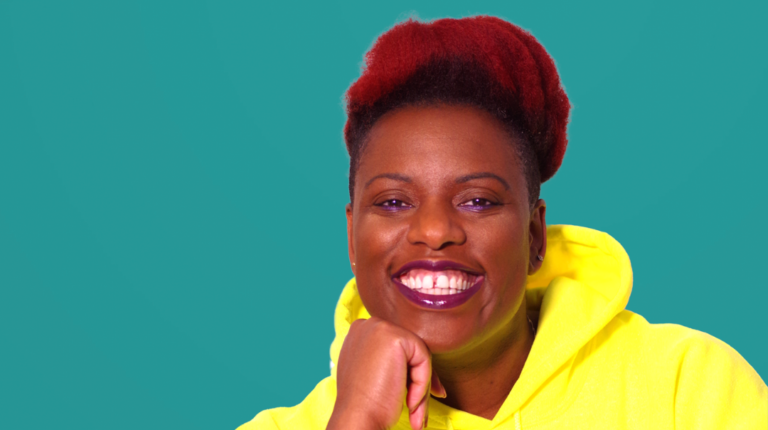Talking about racism in the workplace
16th December 2021
The Black Lives Matter movement of 2020 triggered a paradigm shift across both social media and within organisations. Since then, many HR professionals and leadership teams have invested significant amounts of time, money, and resources into their D&I strategy. But, how can we move the dialogue about racism forward within the workplace to make a tangible difference and to incite real change?
We were privileged to have Shereen Daniels, MD of HR Rewired, host a round table with Trapeze HR to talk on this subject from her viewpoint.
We wanted to share with you some key points which could support you with your own D&I journey, specifically when opening up a conversation about racism in the workplace.
It isn’t about statistics
One of the first things that Shereen highlighted was that although making a conscious effort to hire a more diverse cross-section of people into the workforce is a step in the right direction, it can become performative and a box-ticking exercise if it doesn’t go deeper than a transactional initiative.
Working from the inside out and talking about racism; giving a voice to those in your business who will better help you understand what steps need to be taken. A homogeneous workforce is unfortunately built into many organisations already, so creating a framework that enables you to talk the talk, without walking the walk, is fairly common.
An article written by Carmen Morris at Forbes spoke about this in depth, as she highlights that anti-racism is not a performance game;
“The anti-racist agenda is central to the race equality agenda. It is the avenue through which real, authentic inclusion is ultimately supported. As an agenda, anti-racism is transformative in nature.
Being consciously authentic about positive structural change means moving away from performative allyship and realising, and embedding anti-racist solutions to become inclusive. The agenda supports ‘becoming’, not merely talking about it.”
In essence, although statistics and data are a crucial part of holding you and others accountable in your D&I journey, ensure that they aren’t used as the only barometer of success.
Top tip: Allow for anonymous feedback, so employees feel more comfortable sharing their views in the first instance.
Be clear about your intention
Why are you talking about racism at work? Why are you developing or rolling out an updated D&I or anti-racism strategy? Is it just a superficial activity? Is there a wider purpose, and what exactly is that?
Although D&I initiatives should be equally embraced by decision-makers through to junior employees, you have to ensure that senior management and those at board level want to do things for the right reasons.
The CIPD highlighted the importance of this in an article centred around talking about race at work. Some useful starting points this piece touched upon, are highlighted below:
Is the leadership team ready to listen and engage with feedback? As we’ve already mentioned, everybody must be “on the same page”. It has to be a shared effort to permeate all the layers within your organisation. For example, it won’t be a success if 50% of your leadership team are responsive and passionate about your D&I strategy but the other 50% refuse to show up; you can run the risk of damaging your culture as well as turning it into a box-ticking exercise.
Who will be involved in the conversations? Although senior management are critical to spreading the messaging in the correct way, you must consider individuals at all levels, especially if the hoped for changes will directly impact them.
Who will facilitate the conversations? Ideally, this would be a skilled individual, whether they are already in your organisation or whether you select an external partner with specialist skills in this field.. They should have a lived experience of race as well as the expertise to maintain confidentiality, credibility, and ensure the safety of employees involved.
What will you have in the way of follow up? Strategies are great on paper, but in practice, what touchpoints are there, and who will pick up on them and drive them forward? Consistently following up on initiatives can enable you to stay on track as well as review how your D&I strategy and/or anti-racism campaign is going.
You can read the full list here as well as the rest of the article with excellent resources, which can be applied to all organisations regardless of size or location.
It doesn’t have to come from HR
Although HR & the SLT are crucial in any journey involving increasing diversity and driving forward new thinking, a top-down approach isn’t the only way it can be done.
Creating safe spaces where employees at any level can talk about racism is important, as it fosters not only open dialogue between employees, but also allows you as an HR professional to do a litmus test on the current state of the business.
Getting started can feel quite daunting, but encouraging all employees to have conversations either in teams or with their peer groups where they feel comfortable is a great first step.
Top tip: Create an internal “focus” group that is made up of D&I advocates within your organisation. This puts less of an onus on this being a top level down approach, and instead creates a better platform for conversation.
Get comfortable with being uncomfortable
Talking about racism at work and having meaning behind an anti-racism strategy is going to be uncomfortable, especially if you are an individual who has never had to deal with racism or prejudice. An excellent article written by Toby Mildon explores the notion of “feeling the fear” but doing it regardless, so you can start to incite meaningful change.
There are things that you will get wrong, and there are conversations that will be raw and open. However, D&I isn’t supposed to be a box-ticking exercise to fulfil a diversity quota.
Every organisation will have different needs, and all individuals will have different perspectives, viewpoints and sensitivities about these topics – you must listen to them all with empathy, and be determined and open to create tangible change.
It certainly won’t happen overnight, nor will it be completed quickly – it’s an ongoing mission that your company must commit to, at all levels, for you to see a difference.
What was clear from Shereen’s insightful words and the Q&A session was that you must have the courage to talk about racism at work, instead of hiding behind D&I stats and glossy campaigns. At every level, people need to share the same values and understand the goals that they’re working towards, and finally – it can’t be solely driven by HR.
Share this post:



